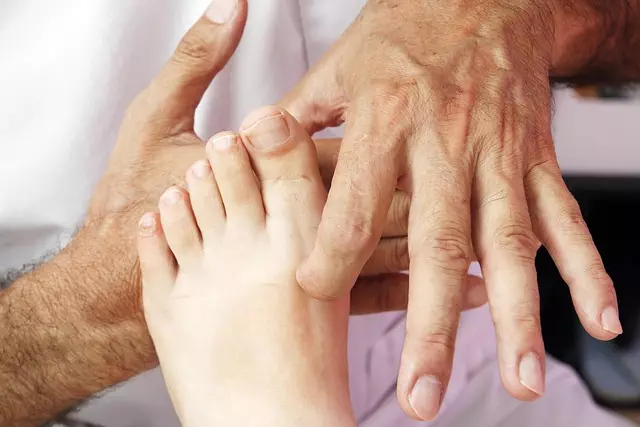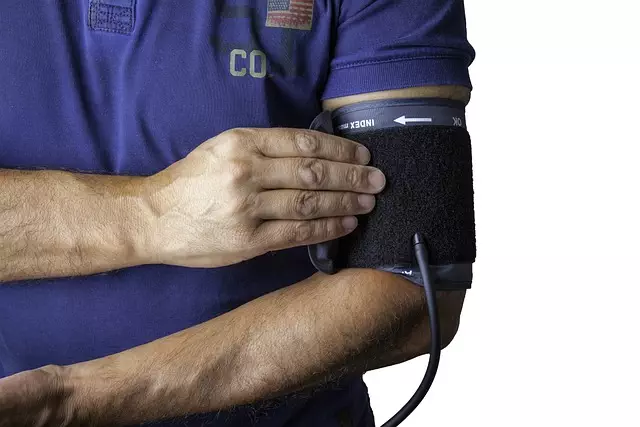Reclaim Well-being: Unlocking Mind’s Potential with Kaiser Therapy
Cognitive therapy, pioneered by Aaron T. Beck, transforms negative thought patterns into positive, a…….
In an era defined by rapid global connections, complex social dynamics, and ever-evolving technologies, the concept of Kaiser Therapy emerges as a powerful tool for navigating societal challenges. This innovative approach, rooted in a blend of historical wisdom and modern practices, offers a unique perspective on fostering community well-being, driving economic growth, and promoting sustainable development. This comprehensive article aims to unravel the intricacies of Kaiser Therapy, exploring its global impact, underlying mechanisms, and the potential it holds for shaping a better future. By delving into various aspects, from economic considerations to technological advancements, we will provide a holistic understanding of this transformative practice.
Kaiser Therapy, often referred to as Community Holistic Healing, is an ancient concept that has evolved over centuries. Its origins can be traced back to traditional Chinese medicine and the principles of holistic healing practiced in various ancient civilizations. The term ‘Kaiser’ here symbolizes a comprehensive approach to health and wellness, encompassing not just physical well-being but also mental, emotional, and social aspects.
At its core, Kaiser Therapy focuses on building strong, resilient communities by addressing their unique needs and challenges. This therapeutic model believes that the well-being of individuals is intrinsically linked to the overall health and vitality of their community. It involves a multi-faceted approach, combining elements of healthcare, education, social services, and community engagement to create sustainable positive change.
Historically, Kaiser Therapy was employed in rural areas where close-knit communities relied on collective support for survival. Healers and community leaders would organize workshops, share traditional knowledge, and facilitate activities that fostered a sense of belonging and purpose. Over time, this practice evolved to adapt to modern urban settings, addressing contemporary issues such as social isolation, mental health disparities, and economic inequality.
The influence of Kaiser Therapy has expanded far beyond its cultural origins, becoming a global phenomenon with diverse adaptations. Its appeal lies in its adaptability, allowing local communities to tailor the approach to their specific needs and cultural contexts. This section explores the international reach and trends shaping the future of Kaiser Therapy:
Asia’s Healing Traditions: Countries like China, Japan, and Korea have embraced their traditional healing practices as a foundation for modern community wellness programs. These nations invest heavily in integrating ancient therapies, such as acupuncture, meditation, and traditional Chinese medicine, into mainstream healthcare systems, often under the umbrella of Kaiser Therapy.
European Community Engagement: In Europe, Kaiser Therapy has gained traction through initiatives focused on building social cohesion and promoting mental health awareness. Many countries have implemented community-based programs that encourage intergenerational activities, cultural exchanges, and peer support networks, mirroring the core principles of this therapy.
North American Urban Revitalization: Cities in North America, particularly those grappling with urban decay and social disparities, are embracing Kaiser Therapy as a tool for community transformation. These initiatives often involve partnerships between local governments, non-profit organizations, and community leaders to create safe spaces, promote cultural events, and address mental health concerns within diverse populations.
Global Mental Health Initiatives: The World Health Organization (WHO) has recognized the importance of community-based interventions in addressing the global mental health crisis. Kaiser Therapy aligns with WHO’s emphasis on strengthening primary healthcare systems and promoting community engagement for mental well-being. This alignment has led to increased funding and support for similar programs worldwide.
The economic implications of Kaiser Therapy are significant, as it influences both the public and private sectors. Understanding the market dynamics is crucial for harnessing the therapy’s potential while ensuring sustainable development:
| Sector | Impact | Opportunities | Challenges |
|---|---|---|---|
| Public Healthcare | Kaiser Therapy can reduce the burden on traditional healthcare systems by promoting preventive care and community support networks. | Governments can invest in community wellness centers, leveraging public-private partnerships to deliver holistic therapy services. | Funding and resource allocation may be challenging, especially in regions with limited fiscal resources. |
| Non-Profit Organizations | Non-profits play a vital role in implementing Kaiser Therapy by facilitating community engagement and providing targeted support services. | Fundraising initiatives can attract donations from individuals and corporations interested in social impact investments. | Sustaining long-term funding is crucial for program continuity and scalability. |
| Private Enterprises | Businesses can contribute to Kaiser Therapy through corporate social responsibility (CSR) programs, fostering employee well-being and community engagement. | Private sectors can offer sponsorship and resources for community events and wellness initiatives. | Balancing CSR goals with commercial interests may present challenges for some companies. |
Technology has played a pivotal role in modernizing Kaiser Therapy, making it more accessible and impactful. Here’s an exploration of the technological advancements shaping this field:
Digital Health Platforms: Mobile apps and online platforms are revolutionizing access to wellness resources. These tools offer guided meditations, mental health support groups, and community event calendars, enabling individuals to engage with Kaiser Therapy from anywhere.
Data Analytics for Community Mapping: Advanced analytics allow therapists and community leaders to identify hotspots of social need and tailor interventions accordingly. By analyzing demographic data, healthcare trends, and community engagement metrics, they can design targeted programs that address specific challenges.
Virtual Reality (VR) for Therapeutic Experiences: VR technology is being utilized to create immersive therapeutic environments, particularly in addressing phobias, post-traumatic stress disorder (PTSD), and pain management. These virtual experiences offer a safe space for individuals to confront and overcome fears and traumas.
Artificial Intelligence (AI) Chatbots: AI-powered chatbots are providing initial assessments and support for mental health concerns, offering 24/7 access to basic therapy services and guiding users towards appropriate resources or professionals.
The development and implementation of Kaiser Therapy are heavily influenced by policy and regulatory frameworks, which play a crucial role in ensuring ethical practices and maximizing benefits:
Licensing and Certification: Many countries have established regulations for community wellness practitioners, setting standards for training, ethics, and practice. These licenses ensure that therapists delivering Kaiser Therapy possess the necessary skills and adhere to professional guidelines.
Data Privacy and Security: With the increasing use of digital tools, data protection laws are essential to safeguard individuals’ sensitive information. Policies like GDPR in Europe and HIPAA in the US set guidelines for collecting, storing, and sharing data related to Kaiser Therapy services.
Funding and Incentives: Governments can encourage community wellness initiatives through grants, subsidies, and tax incentives for organizations and businesses investing in Kaiser Therapy programs. Such policies promote public-private partnerships and foster sustainable development.
Cultural Sensitivity and Inclusion: Policies promoting cultural sensitivity and diversity ensure that Kaiser Therapy practices respect local traditions and beliefs while addressing specific community needs. This approach fosters trust and engagement within diverse populations.
Despite its numerous benefits, Kaiser Therapy faces several challenges and criticisms that require careful consideration and strategic responses:
Stigma and Misunderstanding: One of the primary obstacles is societal stigma associated with mental health issues and alternative therapeutic approaches. Educating communities about the value of Kaiser Therapy in addressing holistic well-being is essential to gaining acceptance and support.
Resource Allocation and Funding: Securing consistent funding for community wellness programs can be challenging, especially in areas with limited financial resources. Diversifying funding sources through public-private partnerships, grants, and community fundraising campaigns is a viable solution.
Scalability and Consistency: Ensuring that Kaiser Therapy programs maintain quality and effectiveness as they scale can be difficult. Standardizing training curricula, developing evaluation frameworks, and implementing ongoing professional development for practitioners are necessary steps to address this challenge.
Cultural Appropriation: As Kaiser Therapy is adapted globally, there is a risk of cultural appropriation if local practices and traditions are not respected. Community engagement and collaboration with local leaders and organizations can help avoid this pitfall, ensuring that the therapy remains culturally relevant and meaningful.
The following case studies illustrate successful applications of Kaiser Therapy, highlighting its impact on various communities:
Case Study 1: Building Resilience in Urban Youth (New York City)
In a high-density urban area struggling with youth violence and mental health issues, community leaders initiated a Kaiser Therapy program focused on at-risk adolescents. The initiative included weekly group sessions combining traditional meditation practices, art therapy, and peer support groups. Over 18 months, the program reported a significant decrease in violent incidents among participants and improved self-esteem and emotional regulation skills. This success led to city-wide adoption of similar programs, integrating Kaiser Therapy into the public healthcare system’s youth services.
Case Study 2: Rural Community Healing (Appalachian Mountains, USA)
A remote mountain community faced with high rates of substance abuse and social isolation implemented a community healing initiative inspired by Kaiser Therapy. The program involved training local residents as wellness coaches who facilitated group discussions, led outdoor activities, and provided peer support. Within two years, the initiative achieved a 35% reduction in substance abuse incidents and increased social participation among all age groups. This success demonstrated the power of empowering communities to address their challenges.
Case Study 3: Cultural Preservation and Mental Health (Aboriginal Communities, Australia)
Aboriginal communities in remote areas of Australia partnered with cultural healers to deliver Kaiser Therapy programs that incorporated traditional healing practices with modern psychological therapies. These initiatives focused on intergenerational trauma and its impact on mental health. By weaving together ancient knowledge and contemporary techniques, the programs achieved remarkable success in improving community well-being while preserving cultural heritage.
The future of Kaiser Therapy is filled with promising possibilities as it continues to evolve and adapt to changing global needs:
Personalized Wellness: Advancements in technology will enable more personalized wellness experiences, allowing individuals to access tailored therapy programs based on their unique needs and preferences.
Global Collaboration: The growing recognition of mental health as a global challenge will foster international collaboration, sharing best practices and resources to expand the reach of Kaiser Therapy worldwide.
Integration with Healthcare Systems: Kaiser Therapy is poised to become an integral part of healthcare systems, offering holistic support alongside traditional medical treatments, especially in primary care settings.
Focus on Preventive Care: With increasing emphasis on preventive healthcare, Kaiser Therapy will play a crucial role in promoting community well-being and reducing the onset of mental health disorders and chronic diseases.
Kaiser Therapy represents a powerful approach to fostering community resilience, enhancing well-being, and driving sustainable development. By addressing the interconnectedness of individual and collective health, this therapy offers a holistic path forward for societies worldwide. As we navigate the complexities of the modern era, Kaiser Therapy serves as a beacon, guiding us toward a future where communities thrive, mental health is prioritized, and global challenges are met with unity and wisdom.
Q: What makes Kaiser Therapy unique compared to traditional therapy?
A: Kaiser Therapy stands out by emphasizing community-based practices and holistic healing. It goes beyond individual therapy sessions by engaging the entire community, fostering a sense of belonging and collective well-being.
Q: Can Kaiser Therapy be effective in urban areas with diverse cultures?
A: Absolutely! The beauty of Kaiser Therapy lies in its adaptability to local cultural contexts. Urban initiatives can incorporate traditional practices from various cultures, ensuring relevance and effectiveness while celebrating diversity.
Q: How does technology enhance the impact of Kaiser Therapy?
A: Technology enables access to wellness resources, facilitates data-driven community mapping, and creates immersive therapeutic experiences. It also supports ongoing communication and engagement, making therapy more accessible and impactful.
Q: What role do governments play in promoting Kaiser Therapy?
A: Governments can drive progress by implementing policies that support community wellness programs, providing funding, and fostering public-private partnerships. They also ensure ethical practices and data privacy through regulations.
Q: Is there evidence to support the effectiveness of Kaiser Therapy?
A: Yes, numerous case studies and research projects demonstrate the positive impact of Kaiser Therapy on various communities. The success stories shared in this article illustrate improved mental health, reduced social isolation, and enhanced community resilience as a result of these programs.

Cognitive therapy, pioneered by Aaron T. Beck, transforms negative thought patterns into positive, a…….

Kaiser Therapy at the Kaiser Holistic Healing Center offers a holistic, empowering approach to menta…….

Kaiser therapy, recognized for its cognitive behavioral approach (CBT), effectively rebuilds confide…….

Kaiser therapy offers a comprehensive approach to breaking bad habits by addressing emotional trigge…….